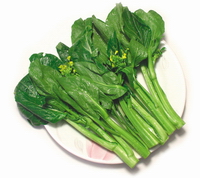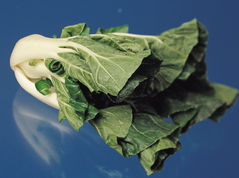
Food Safety Focus (20th Issue, March 2008) – Food Safety Platform
Pesticide Residues in Food (Part II)
Reported by Dr. John LUM, Scientific Officer,
Risk Assessment Section, Centre for Food Safety
In the last issue, we had an overview on pesticides and their residues in food. In the current issue, we shall focus on the safety of pesticide residues in food.
Are Pesticide Residues in Our Food Safe?
The safety of pesticide residues in food depends on several factors, including the nature of the pesticide as well as the amount and duration of the exposure. Food containing excessive amount of pesticide residues may lead to acute and/or chronic adverse health effects.
Acute effects generally occur shortly (within hours or a day) after the exposure to a relatively high level of pesticides, while chronic effects develop over a relatively longer period of time (in terms of months or years) and is usually related to long-term or repeated exposure to pesticide residues at a low level.
Depending on the nature and use patterns of the pesticide, various adverse effects are of concern. Using methamidophos and DDT (the two probably best-known pesticides in Hong Kong) as examples, the main concern of methamidophos is on its acute effects, while DDT is on its chronic effects. Due to their potential adverse effects, these pesticides have been removed from agricultural use in many countries.
| Pesticides | Type of adverse effects | Possible symptoms/effects |
|---|---|---|
| Methamidophos | Acute adverse effects | Vomiting, diarrhoea, dizziness and numbness have been observed in humans, whereas breathing difficulties and blurred vision were noted in severe cases. |
| DDT | Chronic adverse effects | Liver damage, adverse effects on reproduction and development have been observed in laboratory animals. |
Ilustration: Flowering white cabbage (Choi Sum) (left) and Chinese cabbage (Pak Choi) (right) were implicated in pesticide-related food poisoning cases in the 80s-90s.
 |
 |
Safety Reference Values - ADI and ARfD
Both Acceptable Daily Intake (ADI) and Acute Reference Dose (ARfD) are safety reference values commonly used to assess the risk of chronic and acute adverse effects respectively. The concept of ADI has been introduced previously. On the other hand, ARfD is the amount that can be ingested over a short period of time, usually during one meal or one day, without appreciable health risk to the consumer. Both ADI and ARfD are expressed on a body-weight (bw) basis to account for the body-weight of different individuals.
A large safety margin is incorporated in the safety reference values to account for any possible uncertainties. This large safety margin ensures that safety reference values can be applied to different individuals, including those more sensitive to the adverse effects of pesticides (e.g. children).
How Much is Safe?
Using the pesticide endosulfan as an example, an ADI of 0-0.006 mg/kg bw/day and ARfD of 0.02 mg/kg bw have been established. For tomato containing endosulfan at 0.5 mg/kg (i.e. the maximum permitted level recommended by the Codex Alimentarius Commission) and assuming that tomato is the sole dietary source of endosulfan, a 60 kg person could consume 720 g (one catty approximately equals to 605 g) of the tomato everyday over the entire lifetime without appreciable health risk (i.e. not exceeding the ADI). Similarly, the person could consume 2.4 kg of the tomato in one meal or a day without appreciable health risk (i.e. not exceeding the ARfD). Since most of the tomatoes we consume everyday contain pesticide residues at levels much lower than the maximum permitted level or even none at all, the actual consumption limit for tomato alone is much higher than that illustrated above. Moreover, food preparation steps such as washing and cooking help reduce the amount of pesticide residues in food. It is important to note, however, that endosulfan residue may also come from other foodstuff.
Occasional dietary intake above the ADI does not automatically mean that health is at risk, as ADI is developed based on one's lifetime exposure. Moreover, as a large safety margin is incorporated in the safety reference values, occasional exposure to pesticide residues above the safety reference values will not cause immediate health risk under normal situations.
In conclusion, ADI and ARfD are useful values to assess how likely an intake level of a chemical will cause adverse health effects in humans. For risk management purpose, we need to set relevant standards on pesticide residues in food to ensure that pesticides are used properly and consumer health is sufficiently protected. In the next issue, we will focus on how to establish permitted levels of pesticide residues in food.


